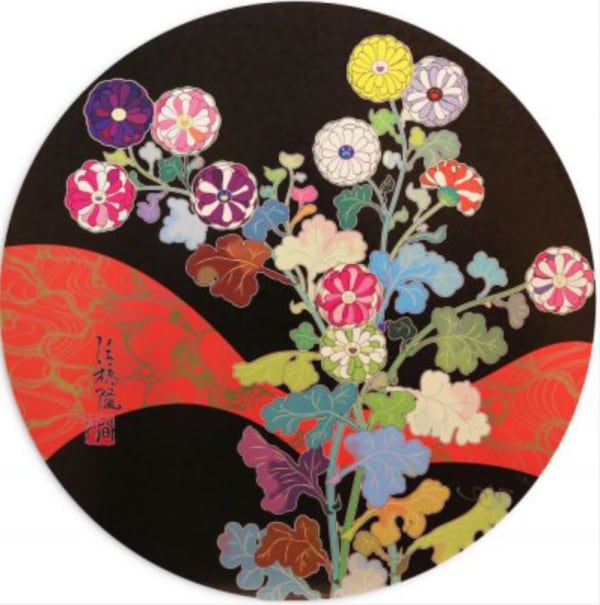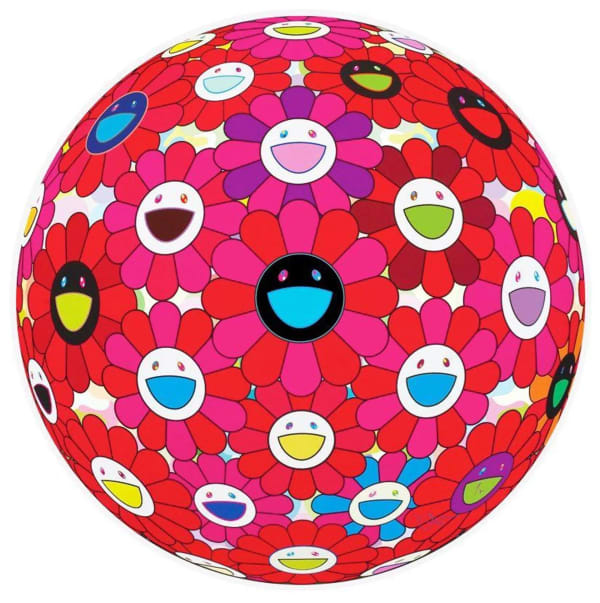-
Dive into the hyper-cute, hyper-colorful world of Takashi Murakami at Guy Hepner, Murakami dealers since 2010. Explore Murakami's most popular motifs including Mr. DOB, smiling flowers and Kaikai and Kiki with our selection of Takashi Murakami prints for sale.
-
New In Takashi Murakami Prints & Originals For Sale
-
Series
-
 Takashi MurakamiKindergarden Days, 207
Takashi MurakamiKindergarden Days, 207 -
 Takashi MurakamiFlowers For Algernon, 2025
Takashi MurakamiFlowers For Algernon, 2025 -
 Takashi MurakamiLouis Vuitton x Takashi Murakami Monogram Flowers Neverfull MM, 2025
Takashi MurakamiLouis Vuitton x Takashi Murakami Monogram Flowers Neverfull MM, 2025 -
 Takashi MurakamiLouis Vuitton x Takashi Murakami Onion Head Jewelry Box, 2025
Takashi MurakamiLouis Vuitton x Takashi Murakami Onion Head Jewelry Box, 2025 -
 Takashi MurakamiLouis Vuitton x Takashi Murakami Trio Toiletry Pouch, 2025
Takashi MurakamiLouis Vuitton x Takashi Murakami Trio Toiletry Pouch, 2025 -
 Takashi MurakamiLV x TM Pochette Accessoires, 2025
Takashi MurakamiLV x TM Pochette Accessoires, 2025
-
-
Overview
"We want to see the newest things. That is because we want to see the future, even if only momentarily."
Often referred to as the “Andy Warhol of Japan”, Takashi Murakami's art fuses traditional Japanese art with pop culture, anime, and manga. Murakami’s bold use of color and pattern have made his art instantly recognizable and widely popular. Murakami’s work often delves into themes of commercialism, cultural identity, and the impact of globalization, providing a commentary on the complexities of contemporary society. Murakami’s neon creations blur the line between high and low art, the west and the east and create dialogues between the present day and history. From a young age, Murakami was interested in manga, anime and otaku (a Japanese word that describes people with consuming interests, particularly in anime, manga, video games, or computers) and as a child wanted to become an animator. Murakami brought these passions into his professional career which led him to create his signature “superflat” look for which he is best known. A term invented by the artist, “superflat” refers to what the artist sees as the flattened nature of Japanese visual culture whilst describing the merging of distinctly high and low culture.
Loved across the world for his cute, vibrant and energetic characters including Mr. DOB, Kaikai and Kiki.and his bright, beaming flowers, Murakami employs a bold use of color, characters, pattern and contrast that has made his artworks instantly recognizable and widely popular amongst collectors.
Murakami employs a variety of mediums across his print and painting output and often uses traditional techniques like offset and handmade, silkscreen printing and it is not unusual for an Murakami painting to have been created using thousands upon thousands of individual screens. Each Murakami print and painting reflects the artist’s meticulous, almost obsessive, attention to detail. From his studio, the KaiKai Kiki factory, Murakami has conquered not only the artworld but the fashion world too. His collaborations with Louis Vuitton in particular, lasting over two decades, exploded his popularity globally and put the artist in front of a new audience reflecting his commitment to breaking down the barriers between fine art and popular culture.
Whether you are new to buying Takashi Murakami prints or an experienced collector, Guy Hepner can assist you. Since 2010, we have helped collectors around the world to buy Takashi Murakami prints and paintings. More recently, in 2024, we held a Takashi Murakami Exhibition that featured over 25 Takashi Murakami prints and originals reflecting our commitment to bringing the colourful, cartoon creations of Murakami to New York.
For more information on our current selection of Takashi Murakami prints for sale, contact info@guyhepner.com -

-
Exhibitions
-
News
-

A Collector's Guide to Takashi Murakami Prints
Why Collect Takashi Murakami? March 14, 2025Takashi Murakami is one of the most influential contemporary artists of the 21st century. His work seamlessly blends traditional Japanese techniques with contemporary pop culture,...Read more -

Louis Vuitton x Takashi Murakami
The Revival of a Legendary Collaboration December 9, 2024The fashion world is abuzz with the relaunch of the iconic Louis Vuitton x Takashi Murakami collaboration, a partnership that once redefined the intersection of...Read more -

Takashi Murakami: Tokyo Calling
This December at Guy Hepner November 25, 2024This December, Guy Hepner presents Tokyo Calling, an exhibition showcasing prints and originals by the renowned Takashi Murakami . The show will bring the artist's...Read more -

Takashi Murakami
Top Artworks Sold At Auction February 26, 2024Takashi Murakami's indelible mark on the art world is evident in his creative ingenuity and the soaring prices his artworks command. Over the past five...Read more
-
























